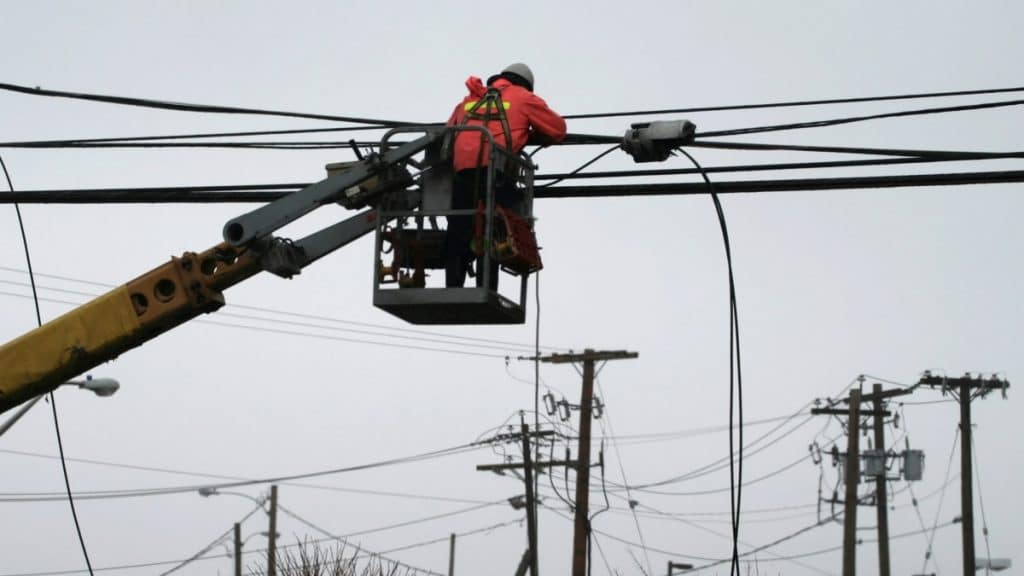Modern infrastructure has various components; utility poles are some of the most overlooked. Yes, they comprise the essential parts of different systems and lines that serve our daily lives.
For instance, utility pole tags form a vital part of the telecommunication and electricity systems we see in the streets. Some are used for broadband and public safety services, such as installing security lights.
In this article, we look at the role of utility poles in developing modern infrastructure.
1 – Enabling Power Distribution
Utility poles are essential elements for power distribution. They are most commonly used in electricity grids to carry overhead power. They help transport power from power stations to homes, businesses, and production plants.
Utility poles form a distribution network, allowing the efficient flow of electricity over an extended geographical distance.
Without utility poles, having a working electric grid on land would be hectic. They minimize the need for underground cabling, which is more expensive to install and maintain.
- Utility poles are helpful in electricity transmission. They can transmit high-voltage electricity to different regions. Most utility pole power lines have been designed to transmit electricity over long distances.
- Electricity distribution: Utility poles also help transmit lower-voltage power in rural and urban areas, delivering electricity to the final consumer.
2 – Development of Telecommunication Infrastructure
Telecommunication cables also need utility poles to work effectively. They are also helpful in setting up modern broadband internet and traditional landline phone services.
The demand for utility poles has also increased because of the need to enhance internet speed across different regions. Utility poles, therefore, facilitate high-speed internet transmission to homes and businesses.
Here are some of the ways utility poles have revolutionized modern telecommunication infrastructure:
- Overhead poles: Overhead utility poles carry copper cables that deliver cable TV and telephone services.
- Fiber-optic cables: Fiber-optic cables run on utility poles and help deliver fast-speed internet today.
3 – Improved Street Lighting and Public Safety
Today, utility poles support security cameras and street lights in most places, especially urban centers.
Security lights and cameras have helped reduce crime, illuminated roads at night to reduce accidents, and, most importantly, enhanced public safety at night.
Utility poles are also helpful in installing surveillance cameras. The invention is part of innovative city initiatives in most countries and helps improve monitoring and urban security.
4 – IoT and Smart City Integration
The development of smart cities depends heavily on utility poles. Smart cities are designed to improve life in urban places, and utility poles serve as physical hubs for sensors and smart devices.
They can host various connected devices, like Wi-Fi systems and traffic sensors. Small cell towers also depend on utility poles for physical support. They are seen as basic antennas to improve broadband capacity and facilitate the development of 5G networks in urban and rural areas.
5 – The Logistical and Economic Importance
The widespread use of utility poles has helped lower infrastructure costs for municipalities and utilities.
Utility poles are cost-effective because they are inexpensive to install and easy to maintain if they develop faults. Installation, repair, and maintenance of utility poles are more economical, given they cover a broad geographical location.
6 – Urban Design Considerations and Aesthetics
Utility poles are seen as an eyesore in most urban settings. Therefore, most municipalities are taking measures to replace them with underground cables. Replacing utility cables will help reduce accidents and lower the impact of storms. Installing utility poles underground will also enhance the city’s aesthetics.
However, the cost of replacing utility poles with underground cables is more significant, which means they will still be a vital part of modern infrastructure.
What Are the Challenges Facing the Use of Utility Poles?
Utility pole usage still faces significant challenges despite being crucial to modern infrastructure.Here are some of the challenges of using utility poles in the modern infrastructure:
- Climate change—Climate change affects the use of utility poles in most parts of the world. As the climate in different regions changes and becomes more extreme, the usage of utility poles is being tested in most economies. In the coming years, we can expect new adaptive and more durable transmission solutions to develop.
- Limited space: There is limited space for erecting utility poles in densely populated urban areas, which makes using them challenging. Space constraints in utility pole use make companies and businesses prefer other transmission solutions in urban places. Space constraints in using utility poles can also hinder improvement in smart city technology.
- Ageing infrastructure: While installing utility poles might be considered low, the ageing infrastructure in modern cities costs a lot to replace. It also takes much time to replace the ageing utility poles in urban and suburban areas. The time taken to replace the utility poles often causes interruptions in telecommunication and power transmissions.
Final Thoughts
The use of utility poles and utility pole tags has helped transform the infrastructure landscape in many ways. Without utility poles, the telecommunication and power transmission industry would not have made such a milestone as we witness today.
Utility poles are a key aspect of modern infrastructural development. They help support power transmission, public safety, and developing technologies. However, utility pole use faces more challenges, like environmental resilience and ageing infrastructure, that cannot be ignored.
